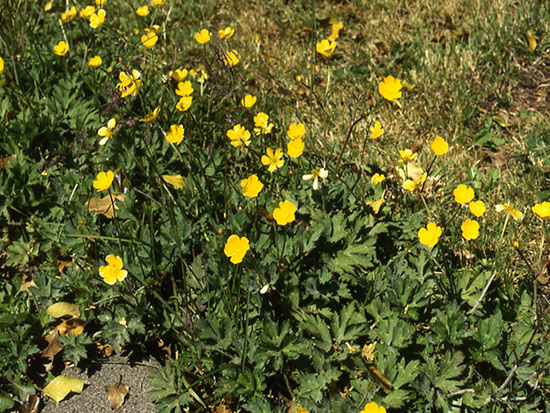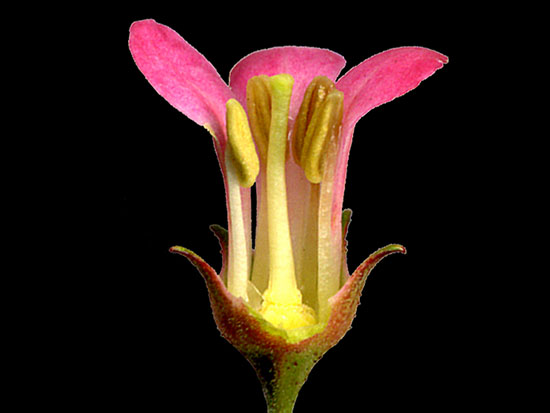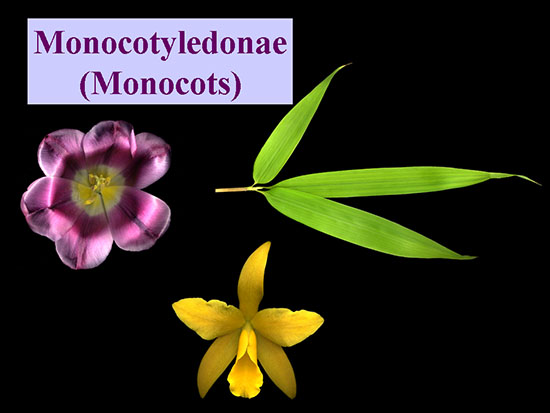If you’re like most people there are plants somewhere in your personal environment with which you are unfamiliar. You don’t know their names, either the common names in English or the scientific names in Latin. This happens very often when purchase a “pre-owned” home and the former owner’s garden and landscape now belongs to you. Sometime in the first year of ownership, as the various plants in your landscape grow, flower and set seed, a mystery plant will appear.

You might or might not recognize this plant if it showed up in your garden. And you might not know it's a pernicious weed!
Why is knowing the name of a mystery plant important? It could be a plant you love and you would like to find more of it but you can’t buy it if you don’t know its name. You also need to know the name of the plant in order to look it up in a decent garden reference book so you can learn how much or how little sunlight it needs, how much to water it, what are its winter cold and summer heat temperature tolerances, and the soil and nutrient requirements. Also, if the plant is in trouble due to pests or disease it can be helpful to know the plant’s name in order to diagnose the problem and then correct it. Finally, you might want to know whether the mystery plant is a nasty weed or not.
You could take a piece of the plant down to your local garden center and ask a knowledgeable professional nurseryman to identify the plant for you. You could also take a sample to your local Master Gardeners at their Plant Clinic where you will also get an accurate identification. Or, you could learn how to identify plants yourself, something that’s fun and easy once you learn how.
Tomorrow Kathryn and I are teaching Plant Identification to the Master Gardener class of Jefferson County, Washington. This coming Saturday we teach the same course to the Master Gardener class of King County so I decided to write today’s blog about plant id.
All plants are classified into groups based on features of their anatomy and life cycle. Some plants have flowers, for example, and some plants do not. Plants without flowers include all the conifers like redwood, pine, spruce, and gingko. Other groups of plants without flowers include ferns and mosses. Plants with flowers include tulip, rose, oak, and apple among many others. The flowering plants, the Angiosperms, some 260,000 species strong, are further classified into two groups, monocots and dicots based on features of the flower.
Monocots usually (but not always) have flowers with parts arranged in three or sets of three — three sepals and three petals, for example. They also usually (but not always) have leaves with parallel veins. This group includes lilies, palms, grasses, orchids, tulips and daffodils along with many others. The name monocot comes from the fact that these plants have one cotyledon, or seed leaf.
Dicots usually, but again not always, have flowers with parts arranged in four or five, five sepals and five petals for example, like a wild rose. They also usually have leaves with veins that connect to each other like the threads of a net. The dicots are a huge group that includes all our fruits, nuts, and vegetables, and many ornamental flowers. The name dicot comes from the fact that these plants have two cotyledons, or seed leaves.
All the plants in the monocots and dicots are broken down further, or classified, into families. The rose family, Rosaceae, for example, along with roses, includes peach, apricot, plum, cherry, apple, pear, almond, blackberry, raspberry, and strawberry in addition to ornamentals like Geum, Pyracantha, Cotoneaster, and many more.
All the plants in each plant family are broken down even further, or classified, into genera (genus) and species. In the rose family the genus Prunus includes the cherry (Prunus avium), the peach (Prunus persica), and the almond (Prunus amygdalus).
The classification system which determines what family, genus, and species a plant belongs to is based on features of the flower, the plant’s reproductive organs. So the whole process of plant identification begins with learning all the parts of the flower, especially the female and male sex parts.

The basic structures of flowers are shown in this photo. Sepals, petals, stamens (male sex parts), and pistil (female sex parts).
Once you’ve learned to recognize these structures and know their names you’re ready to begin to identify that mystery plant. It’s daunting at first. The vocabulary of botany can be a huge impediment initially, but you’ll learn. And you’ll have fun. I promise.




Leave a Reply